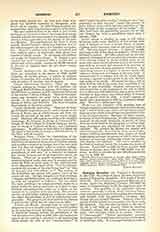

Geramb, BARON FERDINAND DE, in religion, Brother Mary Joseph, Abbot and procurator-general of La Trappe, came of a noble and ancient family in Hungary; b. in Lyons, January 14, 1772; d. at Rome, March 15, 1848. Some historians wrongfully call in question both the place and date of his birth, as also his noble descent. Being of a fiery and chivalrous disposition, he took an active part in the struggles of the monarchies in Europe against the French Revolution, and rose to the rank of lieutenant-general. In 1808 he fell into the hands of Napoleon, who imprisoned him in the fortress of Vincennes until 1814, the time when the allied powers entered Paris. After bidding farewell to the Tsar and Emperor of Austria, he resolved to leave the world. It was at this time that he providentially met the Rev. Father Eugene, Abbot of Notre Dame du Port du Salut, near Laval (France), of whom he begged to be admitted as a novice in the community. He pronounced his vows in 1817. After having rendered great services to that monastery, he was sent, in 1827, to the monastery of Mt Olivet (Alsace). During the Revolution of 1830 de Geramb displayed great courage in the face of a troop of insurgents that had come to pillage the monastery; though the religious had been dispersed, the abbey was at least, by his heroic action, spared the horrors of pillage. It was at this time that Brother Mary Joseph made his pilgrimage to Jerusalem. On his return in 1833, he went to Rome, where he held the office of procurator-general of La Trappe. He soon gained the esteem and affection of Gregory XVI, who, though he was not a priest, named him titular abbot with the insignia of the ring and pectoral cross, a privilege without any precedent. Abbot de Geramb is the author of many works, the principal of which are: “Letters to Eugene on the Eucharist“; “Eternity is approaching”; “Pilgrimage to Jerusalem“; “A Journey from La Trappe to Rome“, besides many others of less importance and of an exclusively ascetical character. They were often reprinted and translated. His style is easy and without affectation. The customs, manners, and incidents of the journey which he describes, all are vividly and attractively given, and the topographical descriptions are of an irreproachable accuracy. Even under the monk’s cowl the great nobleman could occasionally be seen distributing in alms considerable sums of money which he had received from his family to defray his expenses.
In 1796, Baron de Geramb married his cousin Theresa de Adda, who died, in 1808, at Palermo. Six children had been born to him, of which number two died in their youth. On his entrance into La Trappe he confided the surviving children to the care of his brother, Leopold de Geramb, after having placed them under the protection of the Tsar and the Emperor of Austria.
EDMOND M. OBRECHT

